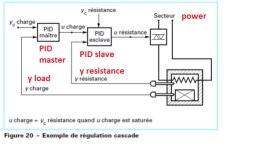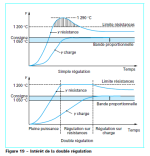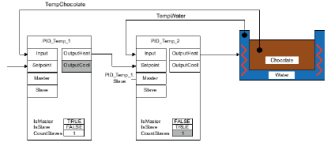Hello everyone,
We have an application in TIA Portal (with ET200SP) to manage the furnace temperature control according to an operator setpoint. For this we have a type K thermocouple to measure the temperature inside the furnace (about 1050 ° C). One importante Thing, a second thermocouple is here to control the temperature of the insulation of the furnace which must not at any time exceed 1080 ° C. For this we opt for a cascade control but I would like to know if this will be enough to have no problem and avoid any overshoot that would have exceeded 1080 ° C at the temperature of the insulation.
I am not an expert in control but I have some issues, including the cascade control, I want to put competent people in the field.
If you know another another method for my application thank you enlighten me on this.
Thanks for your help.
We have an application in TIA Portal (with ET200SP) to manage the furnace temperature control according to an operator setpoint. For this we have a type K thermocouple to measure the temperature inside the furnace (about 1050 ° C). One importante Thing, a second thermocouple is here to control the temperature of the insulation of the furnace which must not at any time exceed 1080 ° C. For this we opt for a cascade control but I would like to know if this will be enough to have no problem and avoid any overshoot that would have exceeded 1080 ° C at the temperature of the insulation.
I am not an expert in control but I have some issues, including the cascade control, I want to put competent people in the field.
If you know another another method for my application thank you enlighten me on this.
Thanks for your help.






